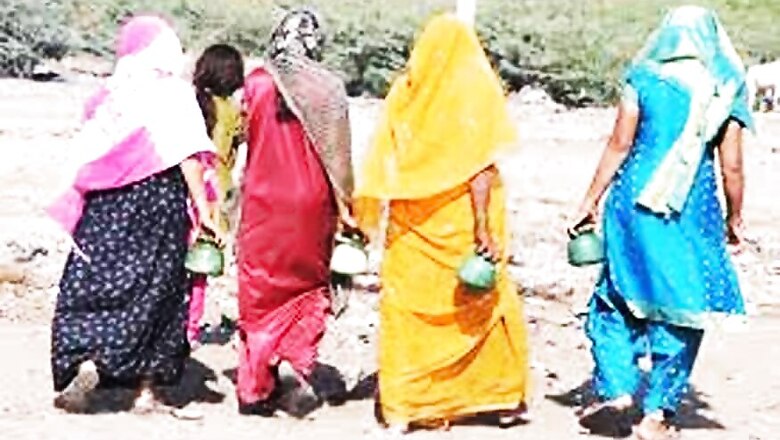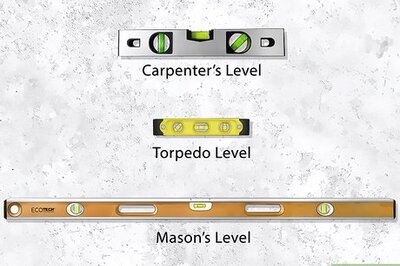
views
New Delhi: The Economic Survey has hailed the government’s Swachh Bharat Mission (SBM) and its “multi-pronged approach” to enhance the level of sanitation in the country.
Besides the construction of toilets, the survey states that the focus in this mission has also been to bring about behavioural change in communities which will help achieve broader economic development objectives.
The multi-pronged approach of the SBM broadly includes community participation; flexibility in choice of toilets depending upon requirement; building institutional capacity of districts for change; instilling behaviour change by incentivizing the performance of State-level institutions; encourage CSR contribution; and use of technology and social media to keep check on the Mission’s progress.
Since 2014-15, a total of Rs 51,314 crore has been allocated for SBM, out of which 95.3 per cent has been released. This funding of the program, according the Survey, has covered 98.9 per cent of India and 9.5 crore toilets have been built in the country till June 2019.
Open Defecation Free Villages
Besides the aim to provide each household with a toilet, a major focus of the SBM has also been to make villages Open Defecation Free (ODF).
“As on May 29, 2019, 5,61,014 villages (93.41 per cent), 2,48,847 gram panchayats (96.20 per cent)- 6,091 blocks (88.60 per cent) and 618 districts (88.41 per cent) have been declared ODF,” reads the survey.
The survey has linked the success of ODF to greater access to Individual Household Latrines (IHHL) in 2018-19 as compared to 2014-15. The Mission gave an incentive of Rs 12,000 for the construction of household toilets.
“Goa has the lowest IHHL coverage followed by Odisha and Telangana. Karnataka and Arunachal Pradesh are very close to achieving 100 per cent coverage,” it said. Given this, most of the states have achieved 100 per cent ODF status.
Goa has the lowest ODF declared followed by Odisha, Telangana and Bihar. West Bengal and Sikkim are close to achieving 100 per cent ODF coverage.
The success of this programme was measured by the survey via the change in behaviour towards sanitation and hygiene.
“The National Annual Rural Sanitation Survey (NARSS) 2018-19, conducted by an Independent Verification Agency (IVA) has found that 93.1 per cent of households had access to toilets during the survey period,” it stated. In addition to this, the NARSS also found that 96.5 per cent of households in rural India that had access to a toilet, used them.
Impact
The survey also assessed the success of SBM from the gains that actions under the scheme had on various socio-economic outcomes of the rural populace.
To gauge the impact of the SBM, the survey tracked the number of diarrhoea and malaria cases in children below 5 years, still birth and low birth weight cases between March 2015, when SBM was implemented and March 2019, when most districts in India had IHHL coverage of 100 per cent.
It was found that wherever IHHL coverage was low, the community suffered more from the above ailments than the districts with high IHHL coverage. This indicates that sanitation and hygiene is the primary reason for these health problems in the country, the survey noted.
The improved sanitation and ODF figures have helped reduce diarrhoea cases in Gujarat, Tamil Nadu, West Bengal and Bihar.
The survey also mentions a UNICEF study on behalf of the Ministry of Drinking Water and Sanitation which assessed the socio-economic benefits of the SBM.
It suggested that when “costs and benefits are compared over a 10-year time period and when 100 per cent of households in a community use a toilet, the financial savings exceed the financial costs to the household by 1.7 times, on average”.
Way Forward
As the first Economic Survey for the newly elected government, the SBM has been envisioned into a “culture of swachhata” at public places.
However, to sustain the momentum created and behavioral change, the Survey recommends motivating the “agents of change at the ground level, impart training to field agents, appointment of sanitation ambassadors”. Obtaining systemic feedback from all users makes a significant part of these recommendations.
The survey also suggests focusing on achieving 100 per cent disposal of solid and liquid waste, while also emphasizing the cleaning of rivers via coordinated activities between the Centre and the State and allocating the necessary financial resources for the same.




















Comments
0 comment